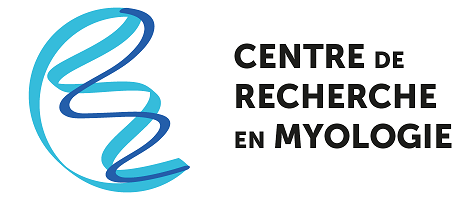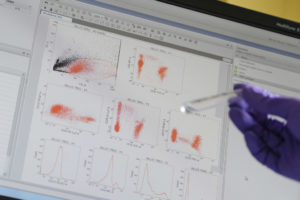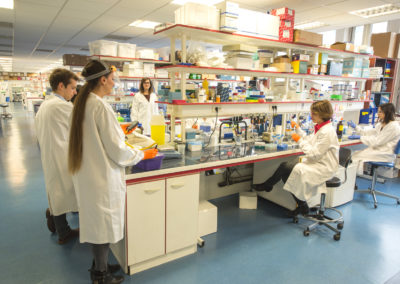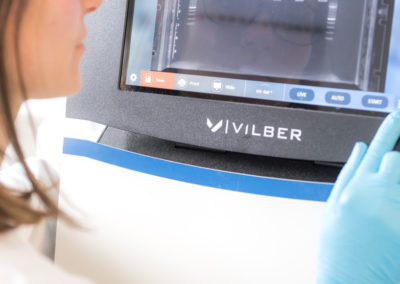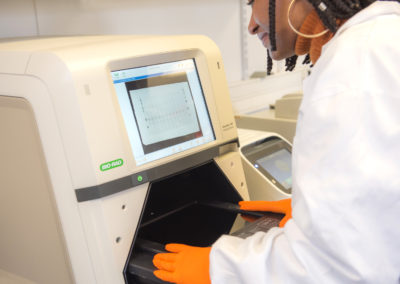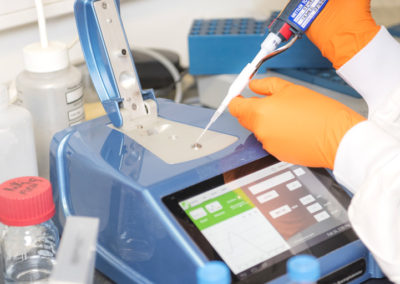Can you introduce yourself to us?
I started my research as a PhD student at the University “La Sapienza” in Rome working on skeletal muscle. Thanks to a scholarship from the Institut Pasteur-Fondazione Cenci Bolognetti (Italy). I was able to carry out part of my PhD in the UMRS787 and the Institute of Myologie. In Paris, I found a very productive working environment with leading research teams in the fields of skeletal muscle and neuromuscular diseases. I then went to Stanford University in California for my postdoctoral training where I worked on epigenetics, that is, the regulation of gene expression by modifications that are made on the DNA sequence. My projects focused on skeleton, bone and cartilage. Then Maria-Grazia Biferi invited me to apply my knowledge to Spinal Muscular Atrophy (SMA) in her team.
Why did you apply for a Marie Curie scholarship ?
To strive for excellence in research, one must not only do one’s own work well but also be recognized by international experts in the field. It is for this reason that I decided to apply for this prestigious scholarship – Marie Skłodowska-Curie Researchers’ Individual Fellowship H2020. My project was evaluated by a commission of more than ten experts who considered it excellent and original for combining such different expertise as mine in epigenetics and that of the Laboratory of Maria-Grazia Biferi on gene therapy for Neuromuscular Diseases. This represents an important recognition and a fundamental step for the development of an academic career in research.
What difficulties have you encountered ?
The writing of a Marie-Curie project takes place on two parts : a scientific project and a more administrative part that often require several months of work. For the scientific project, the writing has been intense but we are used to this type of work. The second part provides a detailed career development plan, and well-developed explanations showing how the candidate’s expertise integrates perfectly and synergizes with the host Institute. This part required a lot of energy and work but thanks to the resources made available by INSERM for the help in writing a Marie-Curie scholarship, we managed to get what we had hoped for.
What is your projet ?
The project focuses on the study of epigenetic profile in Spinal Muscular Atrophy. Our idea is to compare epigenetics at the level of the spinal cord and muscles, in sick and healthy mouse models and then in those which have received treatment. Our objective is to identify the differences in the evolution of sick mice with respect to their epigenetic profile and to observe if these profiles are modified when the mice are treated.
What are the next steps ?
In the future, I would like to set up a research team and thus put my scientific interests at the service of research and also contribute to the formation of future generations of students. The objective will always be to advance the understanding of epigenetic mechanisms and their deregulation in rare diseases. This will be the basis for collaborations to find new treatments for neuromuscular diseases or to optimize existing therapies.
What message do you want to convey about research programs and scholarship applications?
You always have to try ! But I think that to have a chance to win the scholarship what seems fundamental to me is to find a lab that gives you all its support. Indeed, synergy with the scientific environment of the laboratory is a winning card and I invite all applicants to dedicate all their efforts to this aspect before submitting a scholarship application. But we must never hesitate : nothing ventured nothing gained!
The new publication of Piera Smeriglio is now online, Congratulations! The Identification of Novel Biomarkers Is Required to Improve Adult SMA Patient Stratification, Diagnosis and Treatment
